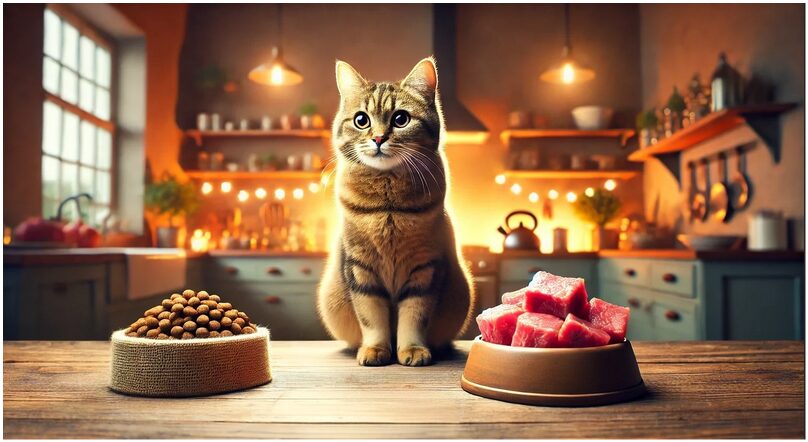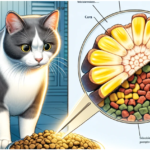Changing your cat’s diet might seem like a daunting task, but with the right approach, you can turn this into a smooth experience for both you and your feline friend. Whether you’re switching due to dietary concerns, introducing a healthier option, or simply wanting to offer a variety of food, here’s everything you need to know about transitioning your cat to a new diet.
Why Change Your Cat’s Diet?
There are many reasons why you might want or need to switch up your cat’s food. Common reasons include:
- Health concerns: Special diets for weight management, urinary health, allergies, or chronic conditions.
- Aging: Older cats may benefit from foods designed for senior cats, which often contain more nutrients.
- Preference: Your cat might just be tired of the same old kibble and ready for something new.
- Nutrition: Switching to fresh, raw, or homemade cat food for better nutrition.
- Life stage changes: Kittens, adults, and seniors all have different nutritional requirements.
The Gradual Transition Approach
Cats are known for being creatures of habit, and abrupt changes in their diet can lead to digestive upset or refusal to eat. To avoid this, the transition should be gradual. Here’s how you can do it:
Step 1: Start with a Small Amount
Begin by mixing a small portion of the new food into your cat’s current diet. A common ratio is 75% old food and 25% new food.
Step 2: Increase Gradually
Over the course of 7-10 days, slowly increase the amount of new food and decrease the amount of old food. Here’s a general guide for a smooth transition:
- Days 1-2: 25% new food, 75% old food
- Days 3-4: 50% new food, 50% old food
- Days 5-6: 75% new food, 25% old food
- Days 7-10: 100% new food
Some cats may need more time to adjust, so you can slow down the process if needed.
Step 3: Observe for Reactions
Throughout the transition, keep a close eye on your cat’s behavior and digestion. Look for signs of discomfort such as vomiting, diarrhea, or refusal to eat. If you notice any of these, slow the process down, or in some cases, consult your vet.
Tips for a Successful Change To A New Diet
1. Flavor and Texture
Cats are particular about textures and flavors. If the new food differs significantly from their current one (e.g., dry kibble to wet food or raw), they may take longer to adapt. Try different textures (pâté, shreds, kibble) if your cat seems picky.
2. Stay Consistent
Stick to the same feeding schedule and avoid offering too many treats during the transition. This helps your cat adjust without additional temptations or disruptions.
3. Add an Enticing Topping
If your cat is hesitant, consider adding a bit of a familiar flavor, like a sprinkle of their favorite dry food, tuna juice, or a dollop of wet food they already like on top of the new food.
4. Hydration is Key
Switching from dry to wet or raw food can improve hydration. Make sure your cat has access to fresh water at all times. Cats often drink less on wet food diets since they get much of their moisture from the food.
5. Patience is Everything
Some cats may resist even the most gradual transition, so be patient. Never let your cat go without food for more than 24 hours—this could lead to serious health issues like hepatic lipidosis (fatty liver disease).
Special Considerations for Senior Cats or Cats with Medical Conditions When Changing To A New Diet
Older cats or those with medical conditions may need even more gradual transitions. Senior cats have more sensitive stomachs and could react differently to diet changes. Consult your vet for personalized advice, especially if you’re transitioning to a prescription diet.
Transitioning from Free Feeding to Mealtimes
If your cat has been free-fed (food available all day), transitioning to timed meals is a great step toward a healthier eating habit. Free feeding can often lead to overeating or picky eating. Here’s how to manage that transition:
- Set meal times: Offer food at specific times of day, leaving the bowl down for about 20-30 minutes.
- Stick to a schedule: Most cats do well with two meals a day. Choose consistent times.
- Use puzzle feeders: If your cat is used to grazing, try slow feeders or food puzzles to help them adjust and stay engaged.
What If Your Cat Refuses the New Diet?
Even after a gradual transition, some cats will outright refuse the new food. Here’s what to try in those cases:
- Warm it up: Warming food slightly can make it smell more appealing to your cat.
- Mixing method: Blend old and new food more thoroughly to make it harder for your cat to pick out the familiar flavors.
- Offer alternatives: If your cat refuses wet food, try a different brand or switch between wet and dry until they show interest.
- Don’t give up: Keep trying, but always ensure your cat is eating enough during the transition.
When to Seek Veterinary Advice
If your cat stops eating altogether or shows signs of illness (vomiting, diarrhea, lethargy), consult your veterinarian. In some cases, your cat may have underlying health issues that affect their ability to digest new foods. A vet can offer specific recommendations tailored to your cat’s health needs.
Final Thoughts
Transitioning your cat to a new diet doesn’t have to be stressful. By taking it slow, keeping a close eye on their behavior, and ensuring their overall well-being, you can help them adjust comfortably. A new diet could mean better health, more energy, and a happier cat!
By using these tips, you can create a more enriching dining experience for your cat that keeps them happy and healthy for years to come!






